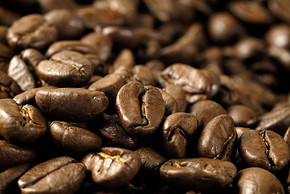Why does Korean coffee go from shining to declining in just 5 years?
Over the past decade, South Korea has been using music, movies and TV dramas to carry out "cultural aggression". Fashionable, romantic and aesthetic have become synonymous with Korean products. Cafes are no exception. Fashion and romance are prominent labels for almost all Korean families. Compared with Starbucks' high proportion of non-franchise policy, the rapid rise of Korean coffee is largely due to the opening up of the franchise model and co-operation mode.
On July 24th, he built Korean coffee brands such as Coffee with you, Holly and Mangosix (Mango New World). Kang Hoon, known as the "king of coffee" in South Korea, finally chose to die because he could not bear the burden.
As soon as the news came out, Korean coffee attracted attention again.
Since 2011, coffee brands such as coffee accompany you and Hollis have entered the Chinese market and are very popular because of their large space, emphasis on "youth" and community positioning, and have expanded rapidly in China through the joining model; by 2015, coffee accompanies you due to the exposure of the joining scandal, Korean coffee began to fall into the tide of shop closure.
Why does Korean coffee go from shining to declining in just 5 years?
Ignore the product attribute and consume one's own advantage
For Korean brands, many people's first impression is "fashion trend". Because of its colorful or lovely shape, Korean products always inspire people's infinite reverie about their tastes, and have long been labeled as fashionable restaurants and widely spread on social platforms.
Compared with other coffee brands, this is an advantage-it has its own social attributes, but Korean Coffee's strategy for such superior products is surprising.
For example: Starbucks USA has produced a limited number of unicorn star ice music, in addition to some of the unique color of the unicorn image, there is not much difference in taste, but its own social attributes make this star ice music hit moments.
The smart thing is that Starbucks followed the point-to-point principle and did not make this popular product among women a long-term product, but adopted a time-limited sales model to make it hot for a while.
The difference between Korean coffee is that the best-selling products have never been supplied in a limited way, but produced as much as possible.
Strawberries like Mangosix were once popular on moments and were originally available only during the spring strawberry boom, but they were available for longer and longer over the next two years, making the product with its own social attributes becoming a common drink that can be drunk anywhere and anytime, no longer worth showing off.
On the other hand, they think that regular star products can stabilize the source of customers, but this move weakens the advantage. Selling out-of-season fruit drinks does not satisfy consumers' love of strawberries. On the contrary, it will become a strategic failure because of questioning the quality of products.
Over-reliance on "Korean culture" and lack of effective brand planning
Korean coffee has always had a "strong connection" with Korean stars, which has made it popular among young people in the country. But what is worth pondering is that Korean coffee blindly depends on the attraction of Korean stars, but does not establish its own unique brand fashion trend on this basis.
Although fans are crazy, they are also constantly receiving new messages from South Korean TV dramas, and the popularity of Korean coffee can't keep up with the speed at which fans "change husbands".
In addition, relying on the entertainment industry for brand promotion is also a big problem in finding the target audience.
Korean fans can not help but say that it must be the target group of Korean brands, especially in the female market, but Korean fans have a large span and sustainable spending power. If there is no clear customer portrait, it will undoubtedly cause difficulties for the direction of brand promotion.
Is it the advantage of low price to attract the student party, or the supporting service model to attract white-collar workers in the workplace, or the package form to attract the young mother party?...
This is the goal that should have been determined in the early brand market research, but in the final aimless development, prices, products and even services are disturbed in a complex and chaotic logic. Korean coffee is often promoted with unattractive products or prices, which is puzzling.

Expand without plan and seize market share blindly
The homogenization of coffee market tends to be serious, with coffee as the main business, Korean coffee lacks competitive advantage in all aspects.
According to its positioning, Korean coffee should have a better development direction. For example, Mangosix, which focuses on mango drinks, can take the beverage route and seek a breakthrough in the differences; but excessive pursuit of Starbucks, unplanned and rapid expansion, not only lacks competitive advantages, but also loses its own characteristics.
Blindly copy the Korean model, ignoring market differences
Although China and South Korea are both Asian countries, they still have differences in eating habits. Koreans only drink cold drinks even in winter, while most Chinese women (the main customer group of Korean brands) have very low acceptance of cold drinks on days when the temperature is low. Winter is a real cold winter for Korean coffee.
In addition, Korean coffee may have made a mistake in positioning its comfort space, often in large storefronts of 300-600 square feet. Big space means low turnaround rate and high price, while Korean fans are mostly young.
High price is a concept of accidental consumption for most young groups, such as the low turnover and high guest list of diffuse coffee, and the long-term customer group is mainly business people. Therefore, it is also a challenge for Korean coffee, which focuses on 15-and 16-year-olds, to follow the concept of large space.
Important Notice :
前街咖啡 FrontStreet Coffee has moved to new addredd:
FrontStreet Coffee Address: 315,Donghua East Road,GuangZhou
Tel:020 38364473
- Prev

Indonesia's plan to build the world's second-largest coffee producer is difficult
Following Kaiping (official Wechat account vdailycom) found it difficult for Indonesia to open a small shop of its own to build Indonesia into the world's second largest coffee producer, as it will be difficult for entrepreneurs to increase Indonesian coffee production from 690000 1000 tons to 1 million tons this year if they fail to improve the productivity of coffee plantations. Paranordo, vice president of AEKI. Sunaldo (Pranoto Soe
- Next

It is expected that China's coffee market will maintain a high growth rate in the next five years.
Following Kaiping (official Wechat account vdailycom) found that Beautiful Cafe opened a small shop of its own from 2011 to 2016. China's coffee market grew at a compound annual rate of 13.5%, reaching 14.793 billion yuan in 2016. According to a survey in 12 inland cities, 32% of city dwellers drink coffee. Among them, young men and women, housewives and urban white-collar workers become drinks.
Related
- Is espresso stored overnight in the refrigerator harmful to your body? Is frozen coffee better than freshly ground coffee?
- What parameters and proportions of water temperature should be used to grind and brew fresh coffee beans? Why can't I drink freshly roasted coffee right away?
- Customers have "changed" Manner's new products! Shop assistant: Please don't mess around!
- Remove sockets in customer areas at Starbucks stores?! Netizen: I won't go if I really tear it down
- What is the difference between the taste steps of sun-dried coffee and washed coffee? Why is sun-cured coffee sweeter and washed coffee sour?
- The recipe for salty grapefruit dirty is revealed! Coffee Festival salty grapefruit dirty coffee making materials parameters ratio milk share!
- How about the flavor of Sunlight 74158 at Sidamo Banshaha Mathieu Processing Factory in Ethiopia? 74158 Share the proportion of coffee brewing parameters!
- What effect does Italian American coffee with filter paper have? Will coffee taste better if it is put on filter paper at the bottom of the powder bowl?
- What is the color difference in coffee beans? What are the characteristics of honey processed coffee beans? Why are the anaerobically treated coffee beans uneven in color?
- How does novice Xiaobai quickly get started and make coffee? Newbies learn to make coffee by hand and share the specific steps and process process!

